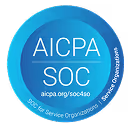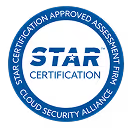Embarking on a new project can often feel like standing at the base of Mt. Everest — the summit simply seems too far off, too detached, too challenging to ever reach. Yet, just like professional climbers who break down their Mount Everest goal into various stages, seasoned project managers also use a guiding framework to navigate challenging projects.
This framework, known as the project management lifecycle, systematically transforms a daunting project into a series of manageable tasks.
It acts as a compass, facilitating organizations to chart their course, adapt to unforeseen obstacles, and ultimately, achieve their targeted objectives. This blog post delves into the intricacies and stages of the project management lifecycle, and more importantly, how exactly it brings clarity, structure, and success to projects of all sizes and types.
In this article
- What is the project management lifecycle?
- Importance of project management lifecycle
- The project management lifecycle: 4 phases
- How to monitor project performance
- Take full control of your project management life cycle with Rocketlane
What is the project management lifecycle?
The project management lifecycle is a systematic approach that guides the execution of a project, from its initiation to its closure. It consists of several phases, each with its specific goals and deliverables.
It provides a structured approach to managing projects, allowing for proper planning, execution, monitoring, and control. The project management lifecycle also promotes proactive decision-making, facilitates effective communication, and helps achieve project success.
Importance of project management lifecycle
The project management lifecycle provides a structured approach for managing a project from initiation to completion. Primarily, it ensures that all the necessary steps and processes are followed, thereby increasing the chances of achieving project objectives within the desired timeframe and budget.
Breaking down the project into distinct phases allows for better control and monitoring of progress, resource allocation, and risk management.
Here are some of the reasons why project management lifecycles are important.
1. Clarity and structure
It provides a clear framework and structure for managing projects, ensuring that all aspects are properly planned and executed. This helps in avoiding confusion, maximizing efficiency, and minimizing risks.
2. Goal alignment
The lifecycle helps in aligning project goals with the overall objectives of the organization. It ensures that project outcomes contribute to the strategic goals, enhancing the value and relevance of the project.
3. Scope management
The lifecycle facilitates effective scope management by clearly defining project requirements, deliverables, and objectives. This helps in avoiding scope creep and ensures that the project remains focused and on track.
4. Resource optimization
Through proper planning and resource allocation at each stage, the lifecycle ensures optimum utilization of resources, including manpower, time, and budget. This helps in preventing resource wastage and improves project efficiency.
5. Risk mitigation
The lifecycle incorporates risk assessment and management throughout the project. It enables proactive identification and mitigation of potential risks, ensuring that they are addressed and minimized at the earliest stages.
6. Stakeholder engagement
The lifecycle emphasizes stakeholder identification and engagement throughout the project. It ensures that stakeholders are involved, their needs are addressed, and communication channels are established to foster collaboration and support.
7. Continuous improvement
The lifecycle promotes continuous improvement by encouraging learning from each project phase. Lessons learned are documented and shared, enabling better decision-making and enhanced project management practices in future projects.
The project management lifecycle: 4 phases
The project management lifecycle is typically divided into four crucial phases, each equally important for the successful completion of any project.
Understanding these four phases not only enables a more structured approach to managing projects but also optimizes efficiency. Here's a quick look at the various aspects of the project management lifecycle phases.
1. Initiation
The initiation phase is the first step in the project management lifecycle. During this phase, project managers and stakeholders come together to define the project's goals, scope, and objectives. It is crucial to lay a solid foundation during this phase to ensure project success. Here are some important steps you need to take in the initiation phase:
Define the project vision
Clearly articulate the purpose and vision of the project. This helps in aligning the team's efforts with the overall goals.
Conduct a feasibility study
Assess the project's feasibility by evaluating factors such as resources, budget, and timeline. This analysis helps in determining if the project is worth pursuing.
Identify stakeholders
Identify the individuals or groups who have a vested interest in the project. Understanding their needs and expectations is vital for effective project management.
Conduct a risk assessment
Analyze potential risks and uncertainties that may impact the project's success. This ensures proper risk management strategies are implemented from the beginning.
Establish project objectives
Clearly define the project objectives and deliverables. This provides a clear direction for the team and keeps them focused on achieving the desired outcomes.
Develop a project charter
Create a document that outlines the project's scope, objectives, stakeholders, and high-level plan. This serves as a roadmap for the project and provides a reference point for all stakeholders.
Obtain project approval
Present the project charter to key stakeholders for approval. This ensures everyone is on board with the project's goals and objectives.
2. Planning
In the planning phase of the project management lifecycle, several key steps need to be taken to set the foundation for a successful project. This phase focuses on carefully identifying project objectives, defining requirements, and creating a detailed roadmap for the upcoming project. Here are some essential steps involved in the planning phase:
Define the project plan
Clearly outline the purpose and goals of the project. Defining the project plan helps ensure that everyone involved has a clear understanding of what needs to be achieved.
Identify stakeholders
Determine the individuals or groups who have an interest in the project. Understanding stakeholders' needs and expectations is crucial for project success.
Gather requirements
Conduct thorough research and analysis to identify project requirements. This involves gathering inputs from stakeholders to determine what needs to be accomplished and any specific constraints or challenges.
Create a project plan
Develop a comprehensive project plan that outlines the activities, timelines, and resources required for the project. This plan is a roadmap throughout the project, ensuring proper execution and control.
Rocketlane PSA software simplifies the process of creating a project plan. With its user-friendly interface and comprehensive features, Rocketlane makes it easy for teams to collaborate and stay organized. The tool also allows you to define project goals, set timelines, allocate resources, and track progress all in one place.
Assess risks
Identify potential risks and uncertainties that may impact the project. By identifying and assessing risks early on, project managers can develop strategies to mitigate or address these risks effectively.
Allocate resources
Determine the necessary resources, such as human resources, equipment, and budget, required to successfully execute the project. This step ensures that resources are allocated optimally, avoiding any shortages or inefficiencies.
Establish communication channels
Set up effective communication channels and protocols to facilitate collaboration and information sharing among team members and stakeholders.
3. Execution
The execution phase is a critical stage in the project management lifecycle. It is during this phase that the project plan is put into action and tasks are executed to achieve project goals. In order to successfully execute and complete tasks, project managers must follow a series of steps. Here are some key steps involved in the execution phase:
Assign tasks
Project managers must assign tasks to team members based on their skills and expertise. This ensures that each task is carried out by the most suitable team member, leading to better results.
Monitor progress
During the execution phase, it is crucial to monitor the progress of each task. This ensures that tasks stay on track and any issues or delays can be addressed in a timely manner.
Manage resources
Effective resource management is essential for successful task execution. Project managers must ensure that resources such as materials, equipment, and manpower are available as needed to complete tasks.
Communication
Communication plays a vital role in task execution. Project managers must establish clear lines of communication with team members to provide guidance, address concerns, and facilitate collaboration.
Track milestones
Milestones are important checkpoints that indicate progress and help keep projects on schedule. Project managers should carefully track milestones to gauge project progress and make adjustments as necessary.
Quality control
Throughout task execution, project managers must ensure that tasks are carried out with a high degree of quality. This involves implementing quality control measures and regularly reviewing work to identify and address any quality issues.
4. Closure
The closuree phase is the final phase of the project management lifecycle. It involves wrapping up all activities, completing final deliverables, and officially closing the project. The close project phase typically includes these key steps:
Project closure documentation
This involves documenting all aspects of the project, such as project objectives, deliverables, lessons learned, project performance, and any relevant documentation. This documentation serves as a reference for future projects and can be useful for auditing purposes. The key areas to cover in this phase include:
Final deliverables
The close project phase focuses on the completion and handover of final deliverables to the stakeholders. Any outstanding work or remaining tasks are finalized, and all necessary documentation and materials are transferred.
Stakeholder communication
Communication with stakeholders is crucial during the close project phase. Project managers should inform stakeholders about the project's completion, provide updates on the final deliverables, and answer any questions or concerns.
Project evaluation
Evaluation of the project's performance and success is conducted during this phase. Project managers assess whether the project achieved its objectives, met stakeholder expectations, and adhered to the budget and timeline. Areas for improvement and lessons learned are documented for future projects.
Resource release
As the project comes to a close, project managers release the resources involved in the project. This includes releasing team members from their project responsibilities, returning equipment or materials, and wrapping up contractual agreements or vendor relationships.
Project closure report
A final project closure report is typically prepared, summarizing the overall project performance, achievements, lessons learned, and recommendations for future projects. This report is shared with relevant stakeholders and can be valuable in improving future project management processes.
How to monitor project performance
Monitoring project performance is one of the critical components in the project management process, directly influencing the outcome and the strategic decisions made along the way. A thorough understanding of performance indicators, monitoring techniques, and the tools available is vital to lead a project to its successful closure.
Here are some steps to monitor your project performance and discover how to streamline the project management workflow.
1. Define key performance indicators (KPIs)
KPIs serve as measurable goals that help gauge the success of a project. They provide insight into the project's progress, efficiency, and overall performance.
In define effective KPIs, it's important to identify the project's objectives and align them with specific, measurable, achievable, relevant, and time-bound metrics. For example, if a project's objective is to increase customer satisfaction, KPIs could include customer feedback ratings, response time, or the number of resolved issues.
2. Use project management software
Project management software provides a centralized platform where you can track project timelines, allocate resources, and assign tasks. It allows you to monitor the progress of each task, analyze critical milestones, and identify potential bottlenecks.
With real-time updates, you can easily measure project performance against set goals and make informed decisions accordingly. Project management software also facilitates collaboration among team members by providing a space for communication, file sharing, and feedback exchange.
3. Regularly review progress
Regularly reviewing progress is a crucial step in monitoring project performance. You can identify any issues or bottlenecks early on by checking on the progress and taking corrective actions. Set up a regular review schedule, whether it's weekly, bi-weekly, or monthly, depending on the project's timeline.
During these reviews, gather relevant data, analyze the key metrics, and compare them against the project's goals and milestones. Look for any deviations or trends that may impact the project's success.
This is an opportunity to communicate with team members, address concerns, and realign objectives if necessary. Regular progress reviews keep the project on track and ensure timely delivery.
4. Analyze data and trends
You can gain valuable insights into its progress and trajectory by thoroughly evaluating the data collected throughout the project. Start by organizing the data, ensuring that it is accurate and up-to-date. Then, dive deeper into the numbers to identify any significant trends or patterns.
Look for areas of improvement or potential risks that may need attention. This analysis will help you make informed decisions and adjustments to keep your project on track and maximize its success. Remember, data analysis is an ongoing process, so regularly review and update your findings as the project progresses.
5. Communicate with stakeholders
In any project, effective communication with stakeholders is crucial for monitoring performance. Stakeholders can include clients, team members, sponsors, and any individuals or groups impacted by the project's success. Regular and open communication ensures all parties are updated on the project's progress and potential issues.
This can be achieved through various channels, such as emails, meetings, or project management tools. Stakeholders can provide feedback, offer suggestions, and address any concerns promptly by maintaining transparent and two-way communication. This not only helps to monitor project performance but also builds trust and fosters collaborative decision-making throughout the project lifecycle.
Take full control of your project management life cycle with Rocketlane
Rocketlane provides a centralized platform where all stakeholders can collaborate, share updates, discuss ideas, and track progress in real-time. No more endless email chains or lost messages in an abyss of virtual space.
It also offers a user-friendly interface and intuitive features that make project management feel like a breeze. From creating tasks and assigning responsibilities to visualizing timelines and milestones, Rocketlane has you covered.
Here are some attractive Rocketlane features to enhance your project management.
1. Efficient project management
Propel your team beyond task management to strategic project delivery using Rocketlane. Improve visibility and collaboration through tools like Gantt charts, Kanban boards, real-time notifications, and automated status updates.
2. Financial management
Maintain cost-effectiveness by rigorously monitoring and managing project expenses across an unlimited number of projects. Leverage Rocketlane's live budget tracker to align projects with budgetary constraints.
3. Optimization of resource planning
Automate processes for precise forecasting and maximize resource utilization to ensure the right personnel are available at the right time, preventing burnout.
4. Data-driven decision-making
Utilize data insights to optimize project portfolios, identify bottlenecks, and uncover opportunities, enabling quicker, more informed decision-making processes.
5. Streamlined client collaboration
Facilitate seamless client engagement with Rocketlane's white-labeled client portals, project chat functionality, and advanced options for file collaboration.
Take control of your project management lifecycle by switching to Rocketlane today!
{{demo}}
FAQs
1. What is a project management lifecycle?
The project management lifecycle refers to the series of phases that a project goes through from initiation to closure.
2. What are the phases of the project management lifecycle?
The typical project management lifecycle comprises 4 phases: initiation, planning, execution, and closure.
3. What are the benefits of following a project management lifecycle?
Following a project management lifecycle helps ensure a structured and organized approach to project execution, improves efficiency, facilitates effective communication, and increases the likelihood of project success.
4. Can the project management lifecycle be customized to fit different types of projects?
Yes, the project management lifecycle can be tailored to fit the unique requirements of different projects, industries, and organizations.
Further reading
- Choosing the best project management tool for your business
- An RFP to choose the right PSA software for your business
- 5 key benefits of adopting PSA software for professional services firms
- How professional services automation tools boost efficiency
- Mastering resource allocation: A 6-step guide to success












